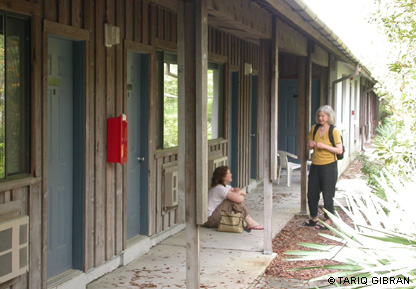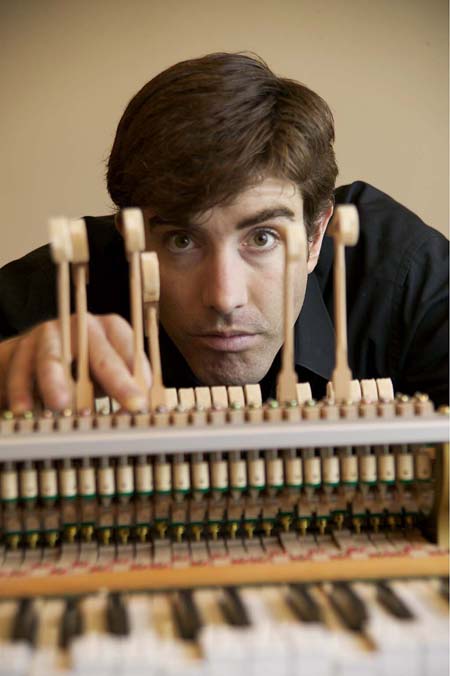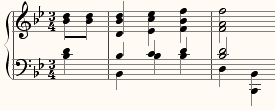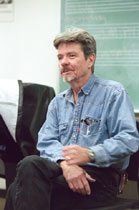 I am going to be the composer-in-residence at the Atlantic Center for the Arts next February 19 through March 11, down in New Smyrna Beach, Florida. (February and March in Florida, can you imagine? I saw the location and accepted before I knew what it was they wanted me to do.) Composers are invited to apply to come hang out with me and be Associate Artists, meeting for at least two hours a day. The rest of the time, we’ll work on our own projects; I’ll be writing a Concerto for Piano and Winds commissioned by pianist Geoffrey Madge and the Orkest de Volharding. Poet Marie Ponsot and architect Steve Badanes are the other artists who’ll be in residence. The application deadline is Ives’s birthday, October 20. I am told by a former Associate that it’s a good idea to advertise this on my blog, to get the word out so people apply. You can read all about my ideas for the residency here, frequently asked questions here, and more general stuff about the Atlantic Center for the Arts here. If you’re reading my blog, you know what I’m all about, and did I mention it’s February in Florida? I’d apply even if I didn’t like my music.
I am going to be the composer-in-residence at the Atlantic Center for the Arts next February 19 through March 11, down in New Smyrna Beach, Florida. (February and March in Florida, can you imagine? I saw the location and accepted before I knew what it was they wanted me to do.) Composers are invited to apply to come hang out with me and be Associate Artists, meeting for at least two hours a day. The rest of the time, we’ll work on our own projects; I’ll be writing a Concerto for Piano and Winds commissioned by pianist Geoffrey Madge and the Orkest de Volharding. Poet Marie Ponsot and architect Steve Badanes are the other artists who’ll be in residence. The application deadline is Ives’s birthday, October 20. I am told by a former Associate that it’s a good idea to advertise this on my blog, to get the word out so people apply. You can read all about my ideas for the residency here, frequently asked questions here, and more general stuff about the Atlantic Center for the Arts here. If you’re reading my blog, you know what I’m all about, and did I mention it’s February in Florida? I’d apply even if I didn’t like my music.



 The great James Tenney died last night [actually, the night before, August 24]. Word went around a few weeks ago that his old lung cancer had returned after a long remission of many years. He was a great teacher, great drinker, great companion, and an interestingly odd personality. As a composer he was a kind of hard-core conceptualist driven by theoretical curiosity. As a result his music could be awfully dry at times, but in about half of it or more the conceptualism transformed in kind of an amazing alchemy to an extreme sensuousness, lovely, slow sound-metamorphoses that you just couldn’t believe. I’ll repeat here what I said about him in American Music in the Twentieth Century:
The great James Tenney died last night [actually, the night before, August 24]. Word went around a few weeks ago that his old lung cancer had returned after a long remission of many years. He was a great teacher, great drinker, great companion, and an interestingly odd personality. As a composer he was a kind of hard-core conceptualist driven by theoretical curiosity. As a result his music could be awfully dry at times, but in about half of it or more the conceptualism transformed in kind of an amazing alchemy to an extreme sensuousness, lovely, slow sound-metamorphoses that you just couldn’t believe. I’ll repeat here what I said about him in American Music in the Twentieth Century: